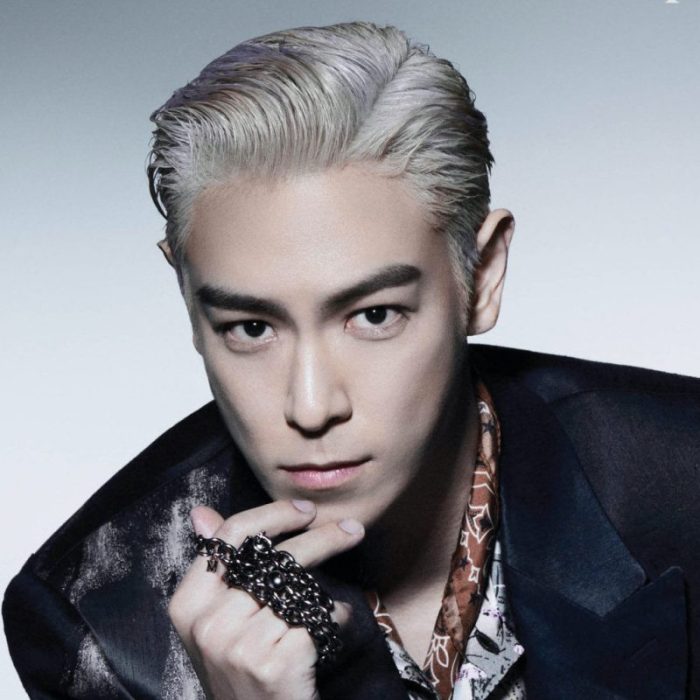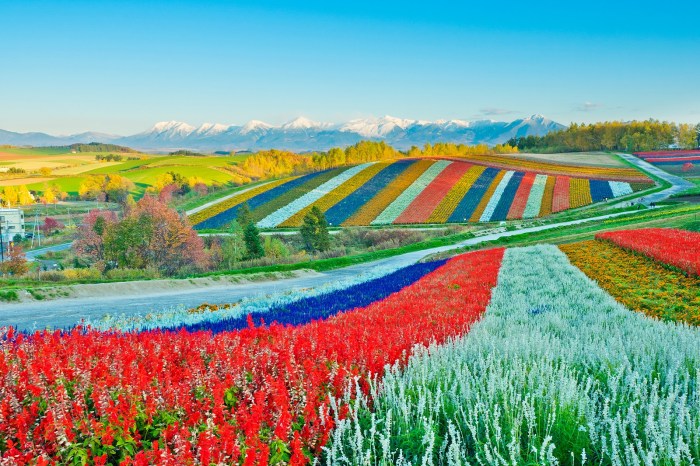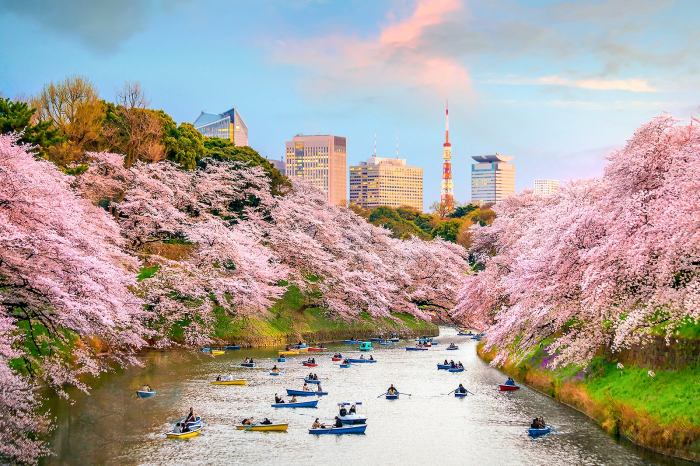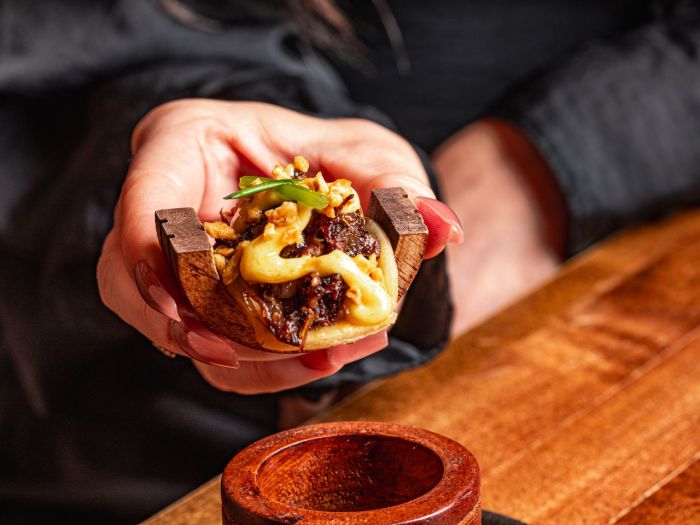Top things to do in China! From ancient wonders to bustling modern cities, China offers a captivating tapestry of experiences. This guide dives deep into the must-see historical sites, breathtaking natural landscapes, and vibrant cultural festivals that await you. Prepare to be amazed by the sheer diversity and scale of this incredible country.
This comprehensive guide explores the top attractions, offering insights into everything from the Great Wall’s historical significance to the vibrant energy of Shanghai’s modern skyline. We’ll also delve into the rich tapestry of Chinese culture, from traditional festivals to delicious regional cuisines. Whether you’re a history buff, nature enthusiast, or a foodie, this guide is designed to inspire your next Chinese adventure.
Introduction to China’s Attractions
China, a land of breathtaking landscapes and profound history, beckons travelers with a tapestry of experiences. From the majestic Great Wall to the vibrant streets of Shanghai, China offers a unique blend of ancient wonders and modern marvels. Its rich cultural heritage, steeped in traditions spanning millennia, intertwines seamlessly with the country’s rapid economic growth, creating a captivating destination for those seeking both historical immersion and contemporary excitement.
The sheer diversity of the country, encompassing bustling metropolises and serene rural villages, guarantees a personalized adventure for every visitor.China’s attractions span a vast spectrum, from the historical grandeur of ancient cities like Xi’an to the futuristic skyline of Hong Kong. The country’s geographical diversity, encompassing towering mountains, sprawling deserts, and serene rivers, provides an unparalleled opportunity to explore a multitude of environments and encounter diverse cultures.
The sheer scale of China’s attractions demands careful planning and consideration, allowing visitors to tailor their journey to their specific interests and pace.
Regions and Prominent Attractions
China’s diverse landscapes and historical significance are reflected in its various regions. Each region boasts unique attractions, offering travelers a multifaceted experience. The following table highlights some of the key regions and their prominent attractions, alongside estimated visit durations. These durations are approximations and can vary based on individual interests and travel styles.
| Region | Prominent Attractions | Estimated Visit Duration (Days) |
|---|---|---|
| Beijing | Forbidden City, The Great Wall (Mutianyu section), Tiananmen Square, Summer Palace | 3-5 |
| Xi’an | Terracotta Army Museum, Big Wild Goose Pagoda, Muslim Quarter | 2-4 |
| Shanghai | The Bund, Oriental Pearl Tower, Yu Garden, Nanjing Road | 3-5 |
| Guilin & Yangshuo | Li River cruise, Yangshuo countryside, Reed Flute Cave | 3-5 |
| Sichuan | Giant Panda Breeding Research Base, Mount Emei, Leshan Giant Buddha | 5-7 |
| Hainan Island | Tropical beaches, lush rainforests, and historical sites like the Chengmai Temple | 4-7 |
| Tibet | Potala Palace, Mount Everest Base Camp (trekking) | 7-10+ (Trekking durations vary significantly) |
Types of Experiences in China
China offers a wide range of experiences catering to various interests. From exploring ancient temples and bustling markets to immersing oneself in the serene beauty of nature, the opportunities are boundless. These experiences provide a glimpse into the diverse cultural and historical tapestry of China, offering a personalized journey for every traveler.
- Historical Exploration: Visiting ancient cities like Xi’an, home to the Terracotta Army, or Beijing, with its majestic Forbidden City, allows visitors to step back in time and experience the profound history of China. These sites offer a captivating glimpse into the country’s rich past.
- Cultural Immersion: Exploring vibrant markets, attending traditional performances, or interacting with local communities provides an authentic understanding of Chinese culture. These experiences allow visitors to connect with the heart and soul of the nation, fostering a deeper appreciation for its traditions.
- Natural Wonders: China’s stunning landscapes, including the majestic Himalayas, the vast Gobi Desert, and the serene karst mountains of Guilin, offer unparalleled opportunities for nature enthusiasts. These breathtaking vistas provide a unique opportunity to connect with the natural beauty of China.
- Modern Marvels: China’s rapid modernization is evident in its bustling cities, such as Shanghai and Hong Kong. These vibrant metropolises offer a glimpse into the country’s economic dynamism, showcasing its architectural marvels and technological advancements. This contrasts with the historical sites and showcases a dynamic blend of old and new.
Historical Sites and Monuments: Top Things To Do In China
China’s rich history is etched into its magnificent historical sites and monuments. From the enduring grandeur of the Great Wall to the intricate artistry of ancient temples, these locations offer a captivating glimpse into the past, revealing the country’s evolution and cultural heritage. Exploring these sites provides a profound understanding of Chinese civilization and its enduring influence.These historical sites are not merely remnants of the past; they are living testaments to the ingenuity, artistry, and resilience of the Chinese people.
Each stone, each inscription, whispers stories of emperors, dynasties, and the lives of ordinary people. Visiting these places is more than just a journey through time; it’s a journey into the heart of Chinese culture.
The Great Wall of China
The Great Wall of China, a monumental feat of human engineering, stretches thousands of miles across the country. Its construction spanned centuries, beginning in the 7th century BC and continuing through the Ming Dynasty. The wall wasn’t built in a single project; rather, various dynasties added to and modified sections over time, each contributing their own architectural styles and materials.
Its primary purpose was defense against invaders, effectively marking the northern border of the Chinese empire.
“The Great Wall embodies the determination and resourcefulness of the Chinese people.”
China offers incredible experiences, from the Great Wall to bustling markets. Planning a Labor Day weekend trip? Considering the best cities for a fantastic getaway, check out this list of best cities labor day weekend for some inspiration. Ultimately, China’s diverse landscapes and rich culture make it a fantastic destination, no matter when you visit.
The cultural impact of the Great Wall is profound. It symbolizes China’s resilience, its strength, and its enduring spirit. The sheer scale of the project reflects the manpower and organizational capabilities of past dynasties. Today, it stands as a powerful symbol of China’s history and a must-see destination for tourists worldwide.
The Forbidden City
The Forbidden City, the former imperial palace, stands as a testament to the opulence and power of China’s emperors. Located in the heart of Beijing, it was the home to emperors and their courts for almost 500 years, from the Ming to the Qing dynasties. The intricate architecture, including the vast courtyards, majestic halls, and exquisitely detailed palaces, reflects the imperial power and prestige of the time.The Forbidden City offers a unique glimpse into imperial life.
The daily routines, ceremonies, and social interactions of the emperors and their court were profoundly shaped by the structure and grandeur of the palace. The elaborate architecture and meticulously crafted details showcase the artistry and technical skills of the time.
Other Notable Historical Sites
Beyond the Great Wall and the Forbidden City, China boasts numerous other significant historical sites. These include:
- Terracotta Army: A remarkable collection of life-sized terracotta statues buried with the first Qin Emperor. The statues, depicting soldiers, horses, and chariots, are a stunning example of ancient Chinese craftsmanship and reflect the military power of the Qin Dynasty. They provide an incredible glimpse into the elaborate burial practices of the time.
- Potala Palace: This magnificent palace in Lhasa, Tibet, serves as the winter residence of the Dalai Lamas. Its intricate architecture, influenced by Tibetan Buddhism, combines elements of both Tibetan and Chinese architectural styles. The palace showcases the religious significance of the region and the power of Tibetan Buddhism.
- Yungang Grottoes: These stunning cave temples near Datong, Shanxi province, are carved into the side of a mountain. The caves house numerous Buddhist statues and sculptures, offering a fascinating glimpse into the spread of Buddhism in ancient China. The artistry and scale of the sculptures highlight the deep cultural and religious significance of the region.
Ancient Temples and Pagodas
Ancient temples and pagodas represent a significant aspect of Chinese cultural and religious heritage. They are not just places of worship; they are also architectural marvels, often incorporating intricate designs, vibrant colors, and unique features. The following are a few examples:
- Temple of Heaven: This iconic temple complex in Beijing was used for imperial ceremonies related to agriculture and the harvest. Its design reflects the deep connection between the Chinese people and nature.
- Boudhanath Stupa: This massive stupa in Kathmandu, Nepal, is a significant Buddhist pilgrimage site. While not strictly a Chinese site, its influence and cultural significance are undeniable. The massive structure showcases the historical and religious links between China and the surrounding regions.
- Leshan Giant Buddha: This colossal statue carved into a cliff face is a masterpiece of Buddhist art and engineering. Its scale and intricate design demonstrate the devotion and artistic prowess of the time. It represents a profound understanding of religious devotion and the cultural significance of the region.
Comparing Historical Sites
Comparing these historical sites reveals their unique characteristics. The Great Wall’s scale and strategic importance stand in contrast to the Forbidden City’s opulent detail and focus on imperial power. The Terracotta Army’s artistic value contrasts with the religious significance of the temples and pagodas. Each site provides a unique window into different aspects of Chinese history and culture.
Visitors can tailor their itinerary based on their interests, whether it’s military history, imperial power, or religious devotion.
Natural Wonders and Landscapes

China boasts a breathtaking array of natural landscapes, from towering mountains and lush valleys to vast deserts and flowing rivers. These diverse ecosystems showcase the country’s incredible geological history and vibrant biodiversity. Exploring these natural wonders provides a profound appreciation for the sheer power and beauty of nature.
Zhangjiajie National Forest Park
Zhangjiajie National Forest Park is a captivating spectacle of sculpted rock formations. Towering, jagged peaks pierce the sky, creating a surreal landscape reminiscent of a fantastical world. These unique geological formations, sculpted over millions of years by erosion and weathering, stand as testaments to the powerful forces of nature. The park’s dense forests add another layer of beauty, providing a backdrop for the dramatic peaks and valleys.
Visitors can experience the awe-inspiring scenery through various trails and viewpoints, offering opportunities for breathtaking panoramic vistas.
Huangshan Mountains
The Huangshan Mountains, renowned for their dramatic beauty, feature iconic rock formations that seem to defy gravity. The famous “Huangshan Stone” formations, sculpted by wind and rain, exhibit an array of shapes and sizes. These peaks are often shrouded in mist, creating a mystical ambiance that enhances the allure of the landscape. From the top of these towering peaks, visitors are treated to panoramic views that stretch out across the valleys and surrounding regions.
The picturesque combination of towering peaks, unique rock formations, and the ever-present mist makes Huangshan a truly unforgettable experience.
Jiuzhaigou Valley
Jiuzhaigou Valley is a UNESCO World Heritage Site renowned for its vibrant colors and diverse ecosystems. The valley’s numerous turquoise lakes, reflecting the surrounding mountains, are a sight to behold. These lakes, often nestled within cascading waterfalls, display a breathtaking array of hues, from deep blues and greens to vibrant yellows and oranges. The valley is also home to diverse flora and fauna, adding to its ecological richness and natural beauty.
The harmonious interplay of water, rock, and vegetation creates an unforgettable spectacle.
China’s Diverse Landscapes
China’s vastness encompasses a remarkable diversity of landscapes beyond the iconic mountains and valleys. From the expansive Gobi Desert, with its stark beauty and unique wildlife, to the sprawling grasslands of Inner Mongolia, offering a panorama of open plains and vast horizons, the country’s landscapes are as varied as they are magnificent. Majestic rivers, like the Yangtze and the Yellow River, carve their paths through the land, shaping the landscape and providing life-sustaining water resources.
These rivers have played a crucial role in China’s history and culture, providing sustenance and inspiration for generations.
Comparison of Natural Wonders
| Natural Wonder | Geographical Location | Landscape Characteristics | Unique Characteristics |
|---|---|---|---|
| Zhangjiajie National Forest Park | Hunan Province | Towering peaks, dense forests | Unique sculpted rock formations, surreal landscape |
| Huangshan Mountains | Anhui Province | Towering peaks, mist-shrouded | Iconic rock formations, panoramic views, mystical ambiance |
| Jiuzhaigou Valley | Sichuan Province | Numerous turquoise lakes, waterfalls | Vibrant colors, diverse ecosystems, harmonious interplay of nature |
| Gobi Desert | Various regions | Vast, arid | Unique wildlife, stark beauty |
| Inner Mongolia Grasslands | Inner Mongolia Autonomous Region | Open plains, vast horizons | Stunning landscapes, rich biodiversity |
Cultural Experiences and Festivals
China’s rich tapestry of culture is woven from a multitude of threads, each representing a unique facet of its history and traditions. From the intricate artistry of calligraphy to the vibrant pageantry of festivals, China offers a profound exploration of human creativity and societal values. These cultural expressions, deeply rooted in history, provide a captivating glimpse into the lives and beliefs of the Chinese people.Chinese culture places significant emphasis on honoring tradition and respecting elders.
This respect is reflected in various customs and rituals, shaping daily interactions and social structures. Festivals are particularly important in this context, serving as powerful reminders of shared history and cultural values. These celebrations are filled with symbolic actions and elaborate ceremonies, creating an immersive experience for participants.
Chinese New Year
Chinese New Year, also known as the Spring Festival, is the most important festival in the Chinese calendar. It marks the beginning of the Lunar New Year and is a time for family reunions, feasting, and celebration. The festival’s significance lies in its deep cultural roots and its role in connecting families and communities.The rituals and traditions associated with Chinese New Year are numerous and varied.
Homes are meticulously cleaned and decorated with red lanterns and couplets. Families gather for elaborate feasts, sharing traditional dishes and exchanging gifts. Firecrackers are often set off to ward off evil spirits, and lion and dragon dances add vibrant energy to the festivities. The specific traditions may vary regionally, but the core principles of family reunion and good fortune remain constant.
Other Major Chinese Festivals
Beyond Chinese New Year, numerous other festivals enrich the cultural landscape of China. These celebrations often commemorate historical events, agricultural cycles, or religious beliefs. Each festival holds a unique significance and is marked by distinctive customs and rituals.
- Mid-Autumn Festival: Celebrated on the 15th day of the 8th month of the lunar calendar, this festival is associated with the harvest moon. Families gather to admire the moon, eat mooncakes, and give thanks for the bounty of the harvest. The beauty of the full moon, and the symbolic mooncakes, are significant elements of this celebration.
- Qingming Festival: Commemorating ancestors, this festival is celebrated on the 15th day of the 4th month of the lunar calendar. Families visit ancestral tombs, clean graves, and offer sacrifices. The festival emphasizes respect for the departed and the connection between the living and the dead.
- Dragon Boat Festival: Observed on the 5th day of the 5th month of the lunar calendar, this festival commemorates the poet Qu Yuan. Dragon boat races are a central feature, along with the consumption of zongzi (rice dumplings). The festival combines historical remembrance with cultural performance and tradition.
Traditional Chinese Arts, Top things to do in china
Traditional Chinese arts, such as painting, calligraphy, and martial arts, represent the country’s profound artistic and cultural heritage. These forms of expression often intertwine with philosophy, history, and spiritual beliefs, providing unique insights into Chinese thought and aesthetics.
- Painting: Chinese painting, with its emphasis on brushstrokes and ink washes, often depicts landscapes, figures, or flowers. The art form’s emphasis on capturing the essence of a subject, rather than a precise representation, reflects a distinct aesthetic sensibility.
- Calligraphy: Calligraphy is not merely writing; it’s an art form that emphasizes the beauty and flow of characters. Each stroke possesses a symbolic meaning, and the act of calligraphy often serves as a meditative practice.
- Martial Arts: Martial arts are more than just combat techniques. They embody philosophical principles and spiritual disciplines. From Tai Chi to Kung Fu, these arts are practiced not only for self-defense but also for health, meditation, and self-improvement. The principles of balance, discipline, and focus are key elements in these arts.
Festivals Overview
| Festival | Date (Approximate) | Cultural Significance | Associated Activities |
|---|---|---|---|
| Chinese New Year | Lunar New Year | Family reunion, good fortune, new beginnings | Cleaning, decorations, feasts, gifts, lion/dragon dances |
| Mid-Autumn Festival | 15th day of 8th lunar month | Harvest moon, gratitude for the harvest | Moon viewing, mooncakes, family gatherings |
| Qingming Festival | 15th day of 4th lunar month | Respecting ancestors, honoring the departed | Visiting ancestral tombs, offering sacrifices |
| Dragon Boat Festival | 5th day of 5th lunar month | Commemorating the poet Qu Yuan | Dragon boat races, eating zongzi |
Modern Cities and Urban Life
China’s modern cities pulsate with a vibrant energy, showcasing a breathtaking blend of tradition and innovation. From the towering skyscrapers of Shanghai to the historic charm of Beijing, these urban hubs offer a unique window into China’s rapid economic and social transformation. These cities are not just centers of commerce; they are living laboratories of culture, design, and technological advancement.
The experiences within these urban landscapes range from high-speed rail travel to world-class dining, reflecting the country’s ambition and its growing global presence.China’s modern metropolises are a fascinating study in contrasts. Ancient traditions intertwine with cutting-edge technology, creating a dynamic urban experience. The pace of life is frenetic yet efficient, offering a whirlwind of sights, sounds, and sensations.
The architectural marvels, culinary diversity, and bustling markets contribute to the rich tapestry of urban life.
Shanghai: A Metropolis of Innovation
Shanghai, China’s economic powerhouse, epitomizes modern China. Its iconic skyline, punctuated by towering skyscrapers, reflects the city’s rapid growth and ambition. The Bund, a historic waterfront promenade, offers a glimpse into Shanghai’s past, juxtaposed with the futuristic architecture of the Pudong district. The city’s vibrant streets are a symphony of activity, with bustling markets and trendy shops.
Exploring China’s breathtaking landscapes is a must, from the Great Wall to the Terracotta Army. But if you’re looking for a different kind of adventure, consider the stunning state parks of Kauai, a hidden gem. For a truly unforgettable experience, check out the best state parks kauai for some incredible hikes and views. Ultimately, China still offers a unique and exciting array of experiences for every kind of traveler.
Shopping malls, featuring everything from high-end designer goods to local crafts, cater to diverse tastes. The city’s restaurants showcase an incredible array of cuisines, from traditional Chinese dishes to international fare.
China’s got incredible sights, from the Great Wall to the Terracotta Army. But before you jet off, consider the best ride-on suitcase for your trip! Packing light is key when exploring all those ancient wonders, and a good best ride on suitcases can make getting around easier. You’ll be able to conquer the bustling cities and stunning landscapes with ease.
So, whether you’re backpacking or taking a luxurious trip, your suitcase is your sidekick. Exploring China will be even more enjoyable with the right gear.
Beijing: A Blend of Tradition and Modernity
Beijing, China’s capital, offers a fascinating contrast. The city’s modern skyline, with its glass-and-steel skyscrapers, rises alongside historical landmarks like the Forbidden City and the Great Wall. The city’s urban planning demonstrates a conscious effort to blend the ancient with the new. Beijing’s impressive public transportation system and efficient infrastructure make navigating the city a manageable experience.
The city’s parks, including the vast Olympic Park, offer respite from the bustling streets.
Other Major Cities: Unique Characteristics
Other major Chinese cities, like Guangzhou, Shenzhen, and Chongqing, boast their own unique identities. Guangzhou, a major port city, showcases a mix of traditional markets and modern shopping districts. Shenzhen, a tech hub, is known for its cutting-edge technology and entrepreneurial spirit. Chongqing, with its unique geography and history, presents a distinct blend of urban and rural life. Each city’s economic and cultural contributions contribute significantly to the broader Chinese narrative.
Their distinct identities stem from their individual histories and geographic locations.
Urban Experiences: Shopping, Dining, and Entertainment
Shopping in Chinese cities is an unparalleled experience. From bustling street markets to lavish shopping malls, there’s something for every budget and taste. The sheer variety of goods and services available is astounding. The culinary scene is equally diverse, offering a wide range of dining options, from Michelin-starred restaurants to street food stalls. The vibrant nightlife and entertainment scene cater to all interests, from traditional Chinese opera to modern pop music concerts.
Comparison of Modern Cities
| City | Architectural Style | Economic Activities | Cultural Highlights |
|---|---|---|---|
| Shanghai | Modern, high-rise skyscrapers, juxtaposed with historic architecture | Finance, trade, and international business | The Bund, museums, and trendy shopping |
| Beijing | Blend of traditional and modern architecture, including historical landmarks | Government, tourism, and technology | The Forbidden City, the Great Wall, and numerous historical sites |
| Guangzhou | Mix of traditional and modern buildings, including historic districts | Manufacturing, trade, and logistics | Canton Fair, traditional markets, and local cuisine |
| Shenzhen | Modern, tech-focused architecture | Technology, manufacturing, and innovation | High-tech industries, modern shopping malls, and international companies |
| Chongqing | Modern and traditional architecture, unique due to its geographical location | Manufacturing, logistics, and inland trade | Unique local cuisine, natural landscapes, and industrial heritage |
Food and Cuisine
China’s culinary landscape is a vibrant tapestry woven from regional traditions, reflecting the diverse geography and history of the country. From the spicy Sichuan peppercorns to the delicate Cantonese dim sum, each region boasts a unique style of cooking that showcases the finest ingredients and culinary artistry. The cultural significance of food in Chinese society is deeply ingrained, often representing family gatherings, celebrations, and expressions of respect.
Regional Cuisines
Chinese cuisine is famously diverse, with distinct regional styles. Sichuan cuisine, known for its fiery peppercorns and bold flavors, contrasts sharply with the delicate Cantonese style, emphasizing fresh ingredients and light sauces. Zhejiang cuisine, from the eastern coast, features fresh seafood and a unique approach to preserving flavors. Other notable regional styles include Hunan (savory and spicy), Jiangsu (refined and elegant), and Shandong (robust and hearty).
Each region utilizes local produce and resources to create its own unique culinary identity.
Popular Dishes and Restaurants
Finding authentic and high-quality restaurants is crucial for experiencing the true essence of Chinese cuisine. Many restaurants in major cities offer regional specialties, allowing you to explore different styles. Look for establishments that are popular with locals, often a good indicator of authenticity and quality. A great way to delve into the local experience is to eat at smaller family-run restaurants, often offering a more intimate and authentic dining experience.
Cultural Significance of Food
Food plays a vital role in Chinese culture, often representing family gatherings, celebrations, and expressions of respect. The elaborate preparation and presentation of dishes during special occasions demonstrate the importance placed on food as a symbol of harmony and good fortune. The act of sharing meals is seen as a way to strengthen family ties and build community bonds.
Furthermore, many traditional dishes have symbolic meanings, often representing prosperity, longevity, or good health.
Must-Try Dishes
To truly experience the diversity of Chinese cuisine, consider trying these dishes:
- Mapo Tofu (麻婆豆腐): A Sichuan classic featuring silken tofu simmered in a spicy, savory sauce with minced meat. The unique flavor comes from the Sichuan peppercorns, which provide a numbing sensation in addition to a spicy kick.
- Dumplings (饺子): A versatile dish found throughout China, dumplings are filled with various ingredients like pork, vegetables, or seafood. Their preparation varies by region, with different dough types and fillings.
- Peking Duck (北京烤鸭): A famous Beijing dish, the crispy skin of the duck is incredibly delicate, while the meat is juicy and flavorful. The dish is often served with pancakes, scallions, and hoisin sauce.
Popular Chinese Dishes by Region
| Region | Dish | Description |
|---|---|---|
| Sichuan | Mapo Tofu | Silken tofu in a spicy, savory sauce. |
| Cantonese | Dim Sum | A variety of small steamed or fried dishes. |
| Hunan | Hot Pot | A shared-dining experience where ingredients are cooked at the table. |
| Zhejiang | Seafood Dishes | Fresh seafood, prepared in various ways, showcasing the region’s coastal location. |
| Beijing | Peking Duck | Crispy duck skin with juicy meat. |
Travel Tips and Planning
China, a land of breathtaking landscapes, vibrant culture, and bustling cities, beckons travelers from around the world. Careful planning is key to ensuring a smooth and enjoyable trip. This section provides essential information on travel documents, transportation, accommodations, safety, and organizing your itinerary.Navigating China’s vast expanse and diverse offerings requires a well-structured approach. Knowing the essential requirements and procedures will make your journey seamless and allow you to focus on experiencing the wonders this country has to offer.
Essential Travel Documents and Visa Requirements
China has a visa requirement for most nationalities. The specific requirements depend on your nationality and the duration of your stay. Applying for a visa well in advance is crucial, as processing times can vary. Always check the official website of the Chinese embassy or consulate in your country for the most up-to-date information. Ensure your passport has sufficient validity beyond your intended stay.
Transportation Options Within China
China boasts an extensive and efficient transportation network. High-speed trains are a popular and convenient way to travel between major cities, offering a comfortable and fast experience. Flights are ideal for longer distances, and buses provide an economical option for traveling within regions. Consider booking train tickets in advance, especially during peak season, to secure your desired seats and avoid disappointment.
Accommodation and Lodging Options
China offers a wide array of accommodation options to suit various budgets and preferences. Luxury hotels provide opulent experiences, while budget-friendly guesthouses offer a more local and affordable stay. Mid-range hotels cater to the needs of travelers seeking a balance between comfort and value. Consider your priorities and travel style when choosing your accommodation. Look for hotels with good reviews and convenient locations to enhance your experience.
Safety Precautions and Essential Information for Travelers
China is generally a safe country for tourists. However, like any destination, certain precautions are recommended. Be mindful of your belongings in crowded areas. Familiarize yourself with local customs and etiquette. Learn basic Mandarin phrases to enhance communication and interaction with locals.
Have a local contact number for emergencies. Research local laws and regulations to ensure compliance. Keep important documents and emergency contacts readily available.
Essential Travel Tips
| Category | Tip |
|---|---|
| Visa | Apply for a visa well in advance, and check the validity of your passport. |
| Currency | Exchange currency at authorized exchange bureaus or banks, and be aware of the local exchange rate. |
| Communication | Download a translation app and learn some basic Mandarin phrases. |
| Health | Consult your doctor about necessary vaccinations and medications, and pack appropriate clothing for the climate. |
| Safety | Be mindful of your belongings in public places, and keep important documents secure. |
| Etiquette | Learn about local customs and etiquette to avoid any misunderstandings. |
| Transportation | Research and book transportation options in advance, especially during peak season. |
Last Point
Exploring the top things to do in China is a journey through time and culture. From the majestic Great Wall to the vibrant energy of Shanghai, China offers a captivating blend of history, nature, and modern marvels. This guide provides a starting point for planning your incredible journey. Remember to embrace the unique experiences and immerse yourself in the rich tapestry of Chinese life.
Your adventure awaits!




















